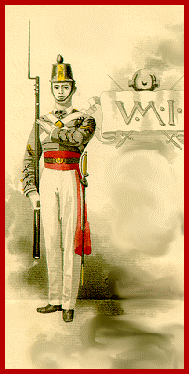
 |
"In 1822, the South Carolina Legislature passed an "An Act to Establish a Competent Force to act as a Municipal Guard for the Protection of the City of Charleston and Vicinity." Land on the North end of Marion Square was selected for an arsenal and guard house and in 1829, the architect, Frederick Wesner, completed the building which was known as The Citadel. A similar facility was constructed in Columbia, South Carolina which was known as The Arsenal. State troops occupied both sites at a cost of $24,000 a year. Governor John P. Richardson felt that guard duties should be combined with a system of education. On December 20, 1842, The South Carolina Legislature passed an act establishing the South Carolina Military Academy. The Citadel and The Arsenal were converted into educational institutions and students replaced the state troops. In 1845, the role of The Arsenal was changed to the instruction of freshmen. As a result, cadets spent their first year in Columbia and transferred to The Citadel for the remaining three years. Enrollment in The South Carolina Military Academy increased from thirty-four students in 1843 to two hundred ninety six in 1864. The $200 tuition in 1843 increased to $1,200 in 1864. When South Carolina seceded from the Union in December 1860, Major Robert Anderson moved his garrison of U.S. troops to Fort Sumter and requested reinforcements from the federal government. On January 9, 1861, Citadel cadets stationed on Morris Island fired on the U.S. steamer, the Star of the West, which failed to supply Fort Sumter with troops and supplies. This was the first overt act of the war. On January 28, 1861, the Corps of Cadets were made part of the military organization of the state and were known as The Battalion of State Cadets. The Arsenal and The Citadel continued to operate as military academies, however, classes were often disrupted when the governor called the cadets into military service. Mounting and manning heavy guns, guard duty and escorting prisoners were among the services performed by the cadets. On February 18, 1865, The Citadel ceased operation as a college when Union troops entered Charleston and occupied the site. The Arsenal was burned by Sherman's troops and never reopened." (text from Citadel history)